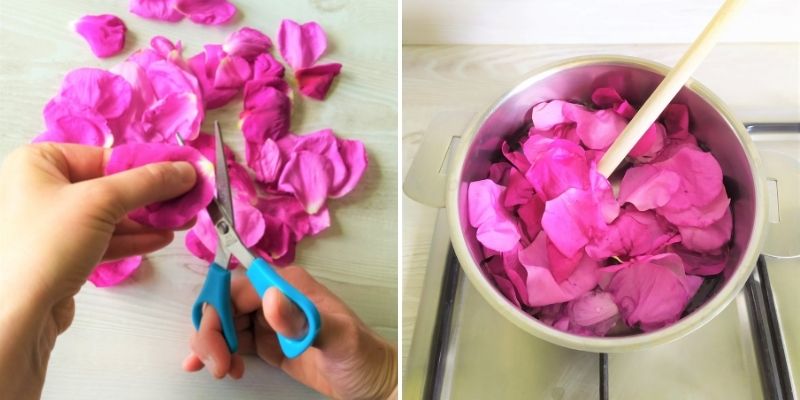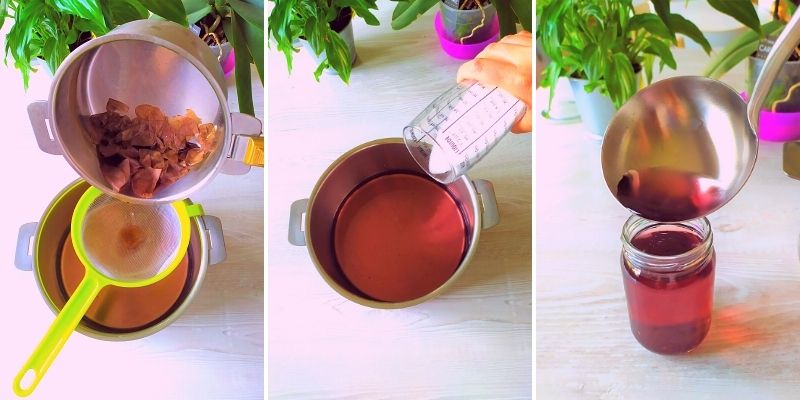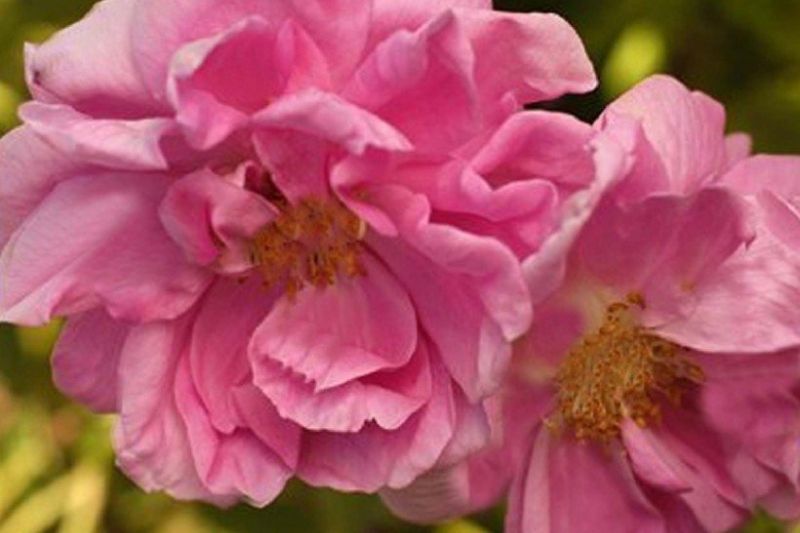The rose, a symbol of love and romance, has inspired and continues to inspire many poets. The queen of the English or romantic garden, it blooms most often during summer, with grace and voluptuousness. Giving a bouquet of roses is a classic gesture, so why not try something original? Let’s pick some of these iconic flowers to prepare rose jelly! Whether to impress your partner, a friend, a family member, or simply to break away from traditional jams, follow this tutorial to create an incredible rose jam that will melt your heart!

When, how, and where to harvest roses?
When to harvest?
Depending on the variety, roses generally bloom in late spring and summer. Harvest the rose petals early in the morning to ensure they are fresh and fragrant.
Which rose varieties to choose?
Before you start making rose jelly, there’s one essential condition for selection: your roses must absolutely not have been treated! Insecticides, fungicides, and fertilisers are to be avoided! If in doubt, don’t take the risk! Only use roses from your garden where you know the cultivation method.
While all roses are technically edible, I recommend choosing roses with intense colours to achieve a beautiful jelly hue, as well as highly fragrant varieties such as:
- The Damask rose (Rosa damascena), with its powerful fragrance, cultivated for its rose essential oil.
- The Rugosa Hansa rose, with its highly fragrant flowers, easy to grow, and also producing large rosehips.
- The apothecary rose or old Gallica Officinalis rose, which produces deep pink flowers abundantly despite its small size.
- The Centifolia roses, such as the Centifolia Muscosa variety, which offers large, heavily scented flowers.
- The bedding rose Eveline Wild, distinguished by its apricot colour and the sweet flavour of its petals.
How to harvest?
- Cut the fully bloomed roses at the base of the flower.
- Remove the petals and discard the pistils and stamens.
- Discard any wilted or blackened petals.
- Remove the white, bitter part at the base of each petal.
- Gently wash the petals to remove any small insects.
- Dry them carefully using absorbent paper or a clean cloth.
The rose jam recipe
Ingredients:
- 200 g of rose petals
- 25 cl of water
- 500 g of jam sugar with pectin (or 500 g of granulated sugar with 6 g of agar-agar)
- 1 organic lemon or 5 cl of lemon juice
Method:
- 1/ Prepare your rose petals by removing the white, bitter part.

- 2/ Gently wash the petals and dry them carefully.
- 3/ In a large saucepan, stockpot, or jam pan, pour in 25 cl of cold water and the petals.
- 4/ Simmer over low heat for 15 to 20 minutes, stirring occasionally. The petals will turn pale, and the water will take on a pink hue. Note: if you use red or purple rose petals, the water will turn violet. Be careful—your water and petals must not turn black! If they do, the cooking time or heat was too high.
- 5/ Let it cool for 1 to 2 hours. For more flavour, you can let it macerate for several hours.
- 6/ Strain using a skimmer or fine cloth to keep only the liquid. You can set aside a few petals if you wish to add them later to the jam jar.
- 7/ Pour the liquid into a saucepan with the sugar and lemon juice. You can add the reserved petals.
- 8/ Bring to a boil and cook for 20 to 30 minutes, stirring frequently.
- 9/ Without letting it cool, pour the jam directly into sterilised jars. Fill to the brim, seal, and immediately turn the jars upside down. Let them cool this way before storing them in a place away from light and temperature fluctuations.

The benefits of rose jelly
During the Middle Ages, rose syrup, rose honey, and rose vinegar were used to treat headaches, sore throats, and bloating. In those ancient times, rose water was also used as an eyewash and ointment. Rose petals are said to contain vitamins A, C, and E, as well as essential fatty acids.
With its enchanting fragrance, the rose is also used in cosmetics, much to the delight of our skin and hair.
Its flavour and scent also make it a culinary ally: tea, cakes, sweets, and other refined dishes inspired by Oriental, Indian, and Mediterranean cuisine. A treat for the taste buds!
To go further:
- Need inspiration? Check out our guide for cooking with roses.
- Want to invite the queen of flowers into your garden? Discover our rose varieties!
- Explore our tips for growing roses in pots.
- Learn all about pruning old roses.
- Do you know how to plant roses? Find out how we plant them in our style.

































Comments